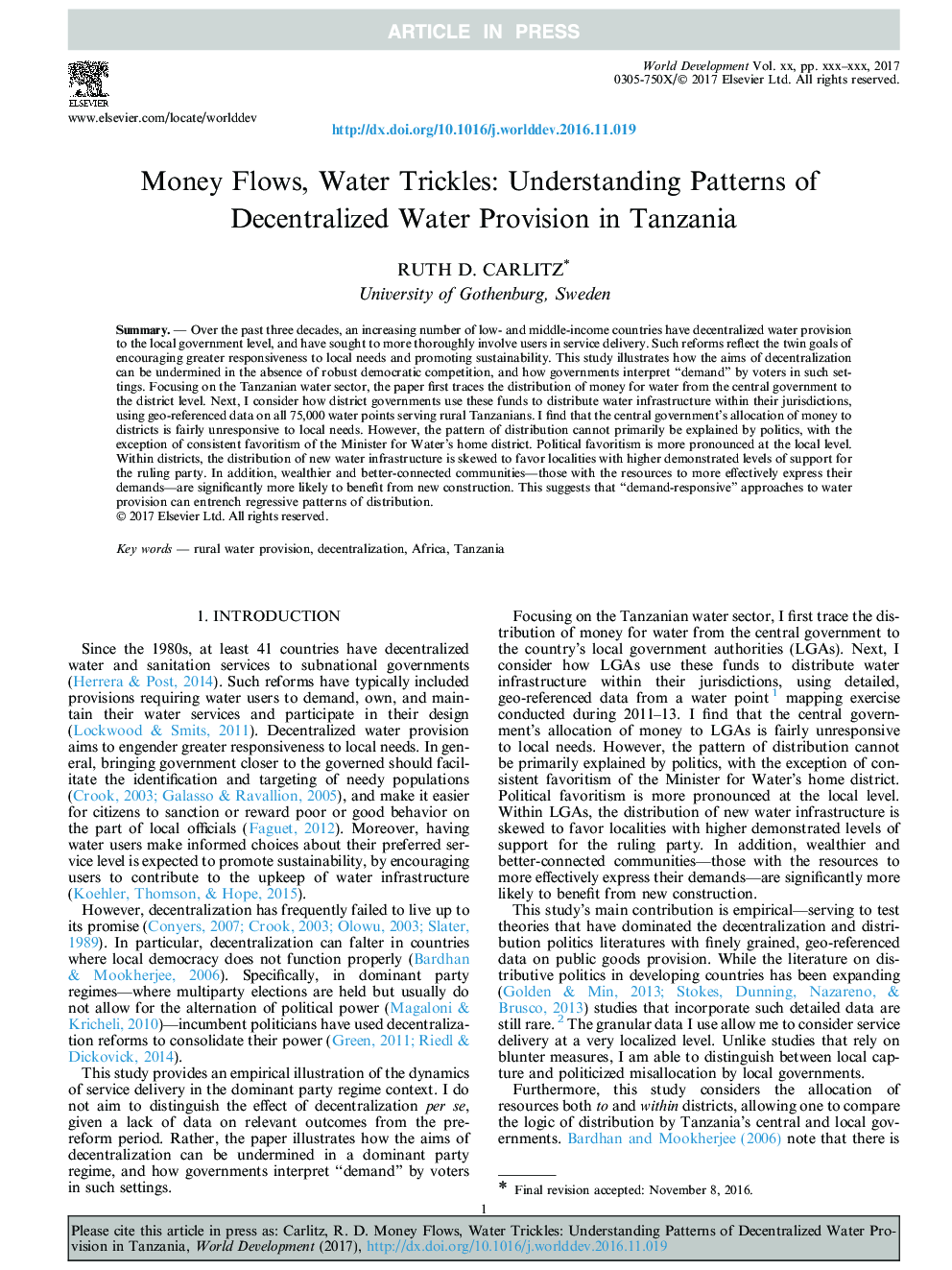| Article ID | Journal | Published Year | Pages | File Type |
|---|---|---|---|---|
| 5105290 | World Development | 2017 | 15 Pages |
Abstract
Over the past three decades, an increasing number of low- and middle-income countries have decentralized water provision to the local government level, and have sought to more thoroughly involve users in service delivery. Such reforms reflect the twin goals of encouraging greater responsiveness to local needs and promoting sustainability. This study illustrates how the aims of decentralization can be undermined in the absence of robust democratic competition, and how governments interpret “demand” by voters in such settings. Focusing on the Tanzanian water sector, the paper first traces the distribution of money for water from the central government to the district level. Next, I consider how district governments use these funds to distribute water infrastructure within their jurisdictions, using geo-referenced data on all 75,000 water points serving rural Tanzanians. I find that the central government's allocation of money to districts is fairly unresponsive to local needs. However, the pattern of distribution cannot primarily be explained by politics, with the exception of consistent favoritism of the Minister for Water's home district. Political favoritism is more pronounced at the local level. Within districts, the distribution of new water infrastructure is skewed to favor localities with higher demonstrated levels of support for the ruling party. In addition, wealthier and better-connected communities-those with the resources to more effectively express their demands-are significantly more likely to benefit from new construction. This suggests that “demand-responsive” approaches to water provision can entrench regressive patterns of distribution.
Keywords
Related Topics
Social Sciences and Humanities
Economics, Econometrics and Finance
Economics and Econometrics
Authors
Ruth D. Carlitz,
